Do You Have Anterior Pelvic Tilt?
You feel that your body is behaving in a weird way – not like how you used to feel years ago. You look at your belly and see that its bulging out. You thought to yourself:
But I’m not exactly fat. I took extra care to only eat healthy foods, not much sugar and exercise regularly. But why is my belly protruding out like this? AND it gets worse after a meal!
And if you also have the same thought, that means you are one of the unlucky people to have anterior pelvic tilt symptoms.
I am one of them and in this post I’m going to go through anterior pelvic tilt symptoms, why it happens and most importantly, how to fix anterior pelvic tilt.
My Name Is Isaac And Here Is My Experience With Anterior Pelvic Tilt
 Hi guys! My name is Isaac and today I want to share about my experiences with anterior pelvic tilt.
Hi guys! My name is Isaac and today I want to share about my experiences with anterior pelvic tilt.
Above is actually my thoughts that I had prior to knowing that I have anterior pelvic tilt. I’m an average guy with some body fat in me but I’m definitely not what you will call fat.
But the thing is I noticed that my belly is protruding outward making me look fatter than what I actually am.
To top it off, this condition also causes more pain on my lower back (I had a slipped disc a few years ago but already treated most of it with the help of my physiotherapist) so much so that it’s making me uncomfortable walking and moving.
Little did I know I have anterior pelvic tilt, a condition where your hip or pelvis is rotated forward, causing everything in the front of your pelvis to be pushed outward.
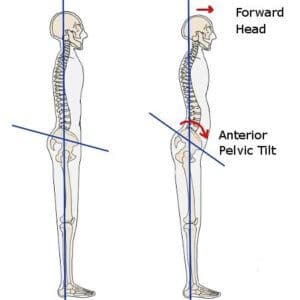
Why Anterior Pelvic Tilt Happens And Its Symptoms
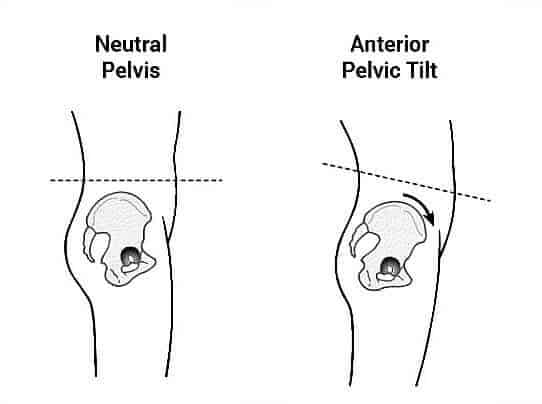 So why is anterior pelvic tilt happening on our body? Simply, it’s because of our sedentary lifestyle with too much sitting.
So why is anterior pelvic tilt happening on our body? Simply, it’s because of our sedentary lifestyle with too much sitting.
Excessive sitting is not a good thing and it causes many issues with your body.
With too much sitting, your hip flexors will be tightened due to the long duration of shortening of psoas major muscles, and this is the root cause of anterior pelvic tilt.
The psoas major muscles is the muscles connecting your lower back and front leg. You can see that when we sit, our legs will bent forward, shortening that muscle.
Excessive sitting caused that muscle to be shortened and tightened, causing imbalance with the glute/butt muscles weaken.
A symptom of anterior pelvic tilt is your hip rotated forward in an unnatural manner. It can be quite hard to see so I’d recommend for you to get butt naked and stand in front of a full sized mirror with your sides facing it.
If you see there’s a huge arch around your lower back just like a women wearing a high heels (i.e your belly protrudes forward and your butt sticks out A LOT), then you can be certain that you have anterior pelvic tilt.
For the record, a normal guy with good spine alignment will have a slight arch at his lower back. Your butt will stick out but it’s not pronounced.
Anterior Pelvic Tilt Symptoms:
- Your belly pops out and butt sticks out
- You’re having trouble walking with your belly constantly pops out
- Lower back pain
- Feeling extra bloated after meals – that’s because a full belly just makes it worse!
How To Fix Anterior Pelvic Tilt?
Correcting anterior pelvic tilt is not an easy thing to do. For a start, most people that have anterior pelvic tilt is due to their lifestyle of excessive sitting which in turns is because of their jobs.
The best fix is to stop sitting too long, but that’s not possible unless you change your job to something that don’t involves sitting for hours.
Fortunately, there are a some things that we can do to correct anterior pelvic tilt. Here are the 6 steps on how you can your fix anterior pelvic:
- Maintain An Upright Posture When Standing
- Maintain An Upright Posture When Sitting
- Strengthen Core With Planks
- Strengthen Core With 4 Point Kneeling Exercise
- Strengthen Glute/Butt Muscles With Bridge Exercise
- Correcting Tight Hip Flexors
1- Maintain An Upright Posture When Standing
The first step in how to fix anterior pelvic tilt is by correcting your posture.
Anterior pelvic tilt happens due to our muscle imbalance around the hip flexors but we can consciously correct this by maintaining an upright posture an achieve a neutral pelvic position.
I have 3 easy tricks to do this:
- Suck in your tummy. You’ll need to feel that you’re making abs/core tight while doing this.
- Puff your chest up and pull your shoulder blades back.
- And as you do both of the above, rotate your pelvis so that it’s in a natural alignment (not rotated forward). You’ll need to squeeze your glute/butt to do this.
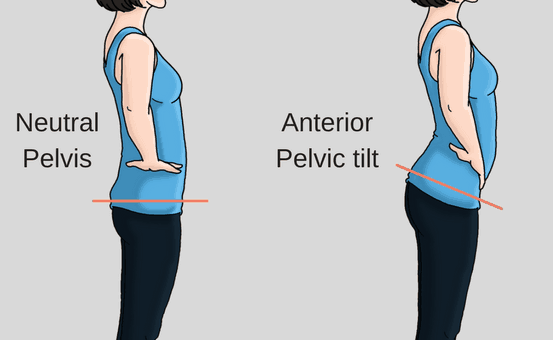
I’d recommend for you to try and do this while naked in front of a mirror. You’ll be able to see how your pelvis, torso and body moves while doing this to achieve the correct standing posture.
If you have lower back pain, you’ll notice that your pain will diminish while in this posture. As your body is in its natural spine alignment, your upper body weight can be translated easily to your feet without overloading your lower back.
While the objective is to always stand like this, it is very difficult to do so especially if your muscle imbalance is chronic. Which is why we will move to the next tips.
2- Maintain An Upright Posture When Sitting

The next step is very important as most of us that suffers from anterior pelvic tilt are sitting for most of the time in a day. So maintaining an upright posture cannot be stressed further as being very important for our well-being.
When doing work, it’s quite easy for us to fell into a slouched position as it’s easier to do work with. But slouching is not a good posture for anyone.
In addition to making the glutes weaker, slouching will also cause damage to our upper body, spine and neck.
Not to mention that doing it for a long time can cause you to develop hunchback in your senior years as the body becomes accustomed to the slouch posture.
The key to maintaining an upright sitting posture is the same as when trying to stand upright. Keep your tummy and core tight, pull shoulder blades back and rotate you pelvis to be in a neutral line.
Again, for those with lower back pain you’ll notice a sudden relief when maintaining an upright sitting position. It’s unthinkable of how a slight change in our posture can affect our body and wellbeing!
3- Strengthen Core With Planks
Maintaining a good posture while sitting and standing is good but we still need to tackle the root cause. One of key elements in fixing anterior pelvic tilt is by strengthening our muscles which become weak due to sitting too much.
The first area to target is the core region. I’ve listed 2 exercises for this purpose. The first one is planks.
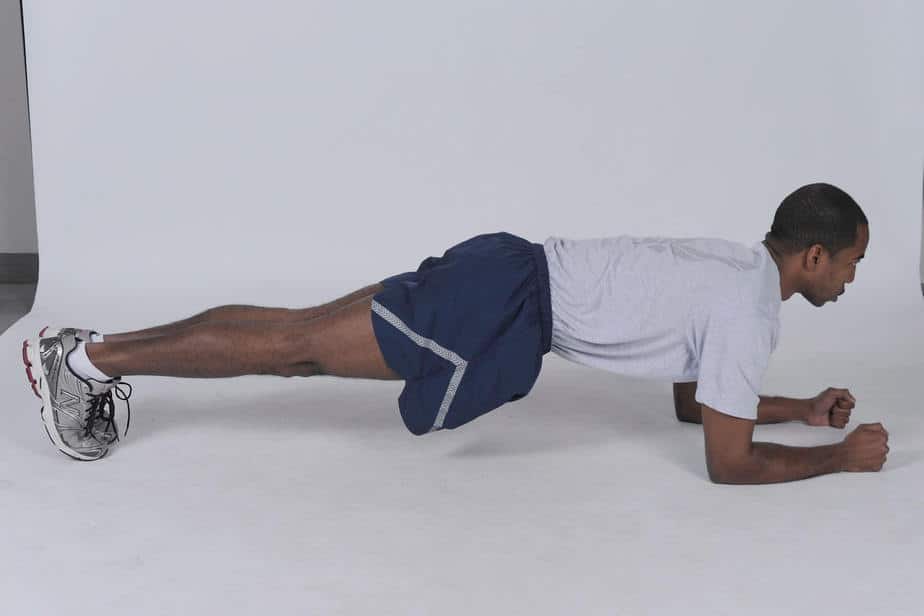
Doing a plank is very simple. Simply drop down to the floor and prop your body with your feet and elbow. Then keep your back straight. Try to maintain for 10 seconds and progress to longer duration as you become stronger.
The challenge for those with anterior pelvic tilt is your back is naturally arching at your hip region (kinda like when you’re standing).
So you will need to use the same tips (suck tummy in, keep core tight and squeeze glute) to ensure your back is straight. You should feel like your whole mid-region is becoming tighter doing this.
If you feel the plank is too much of a challenge, then you can skip it for now and do the 4 point kneeling exercise below in the mean time.
A great video showing the different variations of planks from the easiest to the hardest.
4- Strengthen Core With 4 Point Kneeling Exercise

The next core strengthening exercise is the 4 point kneeling. It’s a bit easier to do and is even recommended for those fresh with low back injury.
Start by moving into the 4 point kneeling posture. Just like when doing the plank, our mid-region will tend to develop an arch around the lower back. What we need to do is to create a straight line on our back as in the pictures.
We can do this by sucking in our tummy and keeping our core tight. Unlike the plank, there is no need to squeeze our glute while doing this exercise – which is why it’s easier to do. Try to keep it for 10 seconds and progress to longer duration.
As the basic 4 point kneeling is fairly easy to do, you can move on to a more advanced version by bringing up alternate hand and leg simultaneously.
A video showing how to do 4 point kneeling exercise advanced version.
5- Strengthen Glute/Butt Muscles With Bridge Exercise
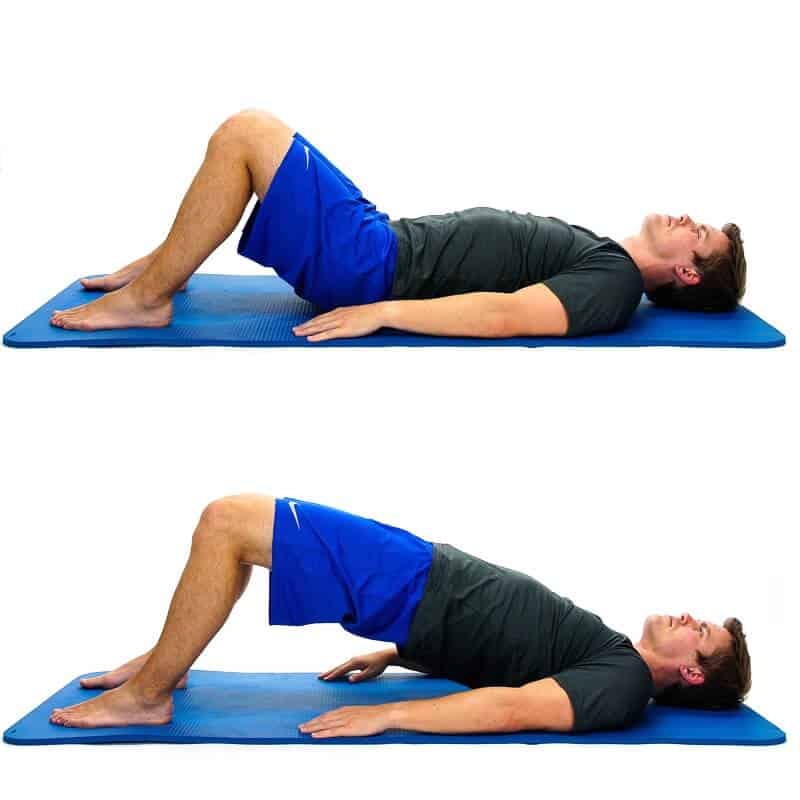
The next target area is the glute or butt muscles. As I’ve mentioned in the early part of the article, sitting too much will cause our glutes to lengthen which makes it weaker.
Bridge exercise focuses on firing and training the glutes muscles. To do it, you need to start by laying on your back with knees bent. Then lift up your buttocks and body off the floor to make a straight line with your upper body.
It is important that you try to use your glutes muscles to do this as much as possible to train it properly. Simply squeeze your glute hard enough without using other parts of your body (legs, abs, etc.) to lift your body off the floor.
At the top of the range, you can push your hips upwards and hold for a few seconds while maintaining squeezing your glute.
Check out this great how to do bridge exercise video by one of my favorite fitness youtuber Scott Herman.
6- Correcting Tight Hip Flexors
Last but not least, one of the most important step to correct anterior pelvic tilt is to correct your tight hip flexors symptoms.
These two are tied together, with the tight hip flexors usually is the root cause of anterior pelvic tilt. Which is why it’s only logical to correct tight hip flexors as it will directly effect your pelvic tilt.
I’ve actually written an entire post on this (click here to read it) so I won’t write it again here. It revolves around some stretching that has the purpose of relieving the tight hip flexor muscles, namely the psoas major and quads (basically the deep muscles connecting our spine to the to the front of our legs).
 One thing that have helped me a lot with my tight hip flexors is the Unlock Your Hip Flexors ebook. It’s fully packed with information about tight hips and its exercise plan is one of the most ingenious plan I’ve ever seen.
One thing that have helped me a lot with my tight hip flexors is the Unlock Your Hip Flexors ebook. It’s fully packed with information about tight hips and its exercise plan is one of the most ingenious plan I’ve ever seen.
The ebook teaches an exercise plan consisting of 10 exercises (some are unique that I’ve never seen before) that need to be done in sequence to unravel the deep hip flexors muscles and unlock it.
In addition with the ebook is a link to a coaching video which I recommend to watch in full as it gives clear instruction on how to do all the exercises.
It also has many information on what to expect from the exercises, where are the target areas and so on. If you’re looking for a concise ebook to treat your tight hip flexors, then you should get this one.

Every purchase of the ebook comes with a link to its very helpful coaching video.

Click Here To Buy Unlock Your Hip Flexors Ebook
Conclusion
Anterior pelvic tilt is something that dreadful to have. It makes you look fat (even though you’re not) and disrupts your daily movement. And if you’re a low back pain sufferer, it will worsen your pain.
The cause of it comes from tight hip flexors and our sedentary lifestyle with too much sitting. As most adults have a job that involves lots of sitting, it’s something that came together with modernization of the world and there’s little that we can do to change this.
What we can do instead to fix the anterior pelvic tilt is by focusing on a proper posture either during sitting or standing.
It requires concious effort to do this but it’s definitely worth it to ensure our body is not accustomed to anterior pelvic tilt further.
Then, we can do strengthening exercises to train our core and glutes. Last but not least, unlocking tight hip flexors will indirectly help this symptom.
All of these are not easy and requires discipline to do it daily. But it offers lifelong benefits that not only help with your anterior pelvic tilt, but also your general health.
I hope you enjoy my article about how to fix anterior pelvic tilt. Do let me know if you have any questions regarding this.
I love to hear what you think =)
Till next time. Cheers!

I thought that I’m a normal guy until I read your article.. I never thought I actually have this anterior pelvic tilt! Yes, looking back I do think me sitting a lot contributed to this problem. I’m going to give these tips a try. Many thanks for the nice article
Hi Rudy. I’m glad my article had helped you to understand your situation. Try out these 6 steps to fix your anterior pelvic tilt and let me know how it goes eh =)
I have to say this guide rocks! It really works in treating my pelvic tilt wohoo! I’ve suffered from this for the past few years, all the while thinking that it could be my special physique for the reason. Turns out, it’s my muscle imbalance. Great job Isaac and thanks again =)
Hi Beld. I’m happy that you’ve managed to turn your tight hips around. Cheers =)
Thank You so much Isaac this helped me a lot.
Hi Lasen. I’m glad that this helped you. Do let me know if you need further help.